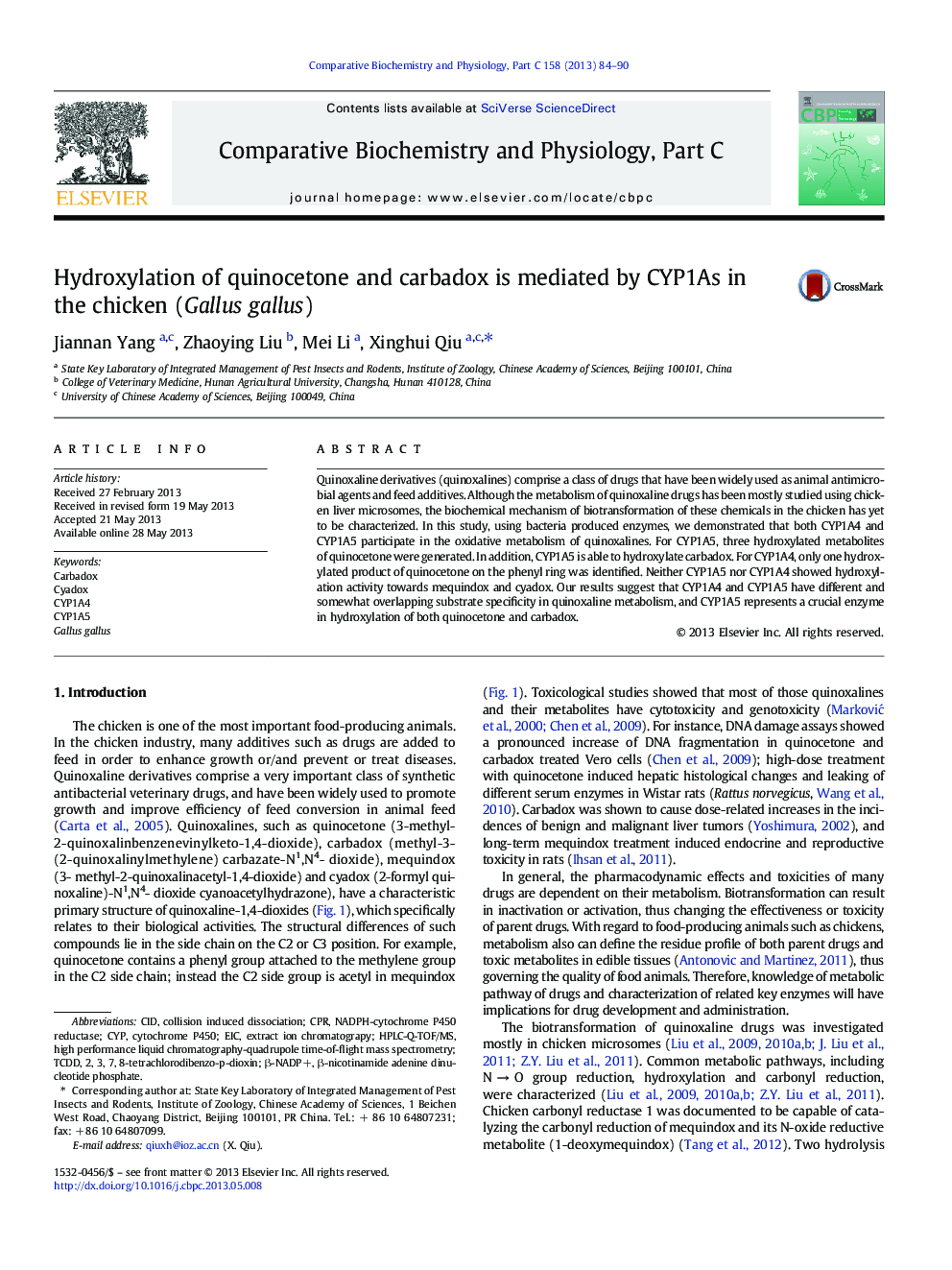| Article ID | Journal | Published Year | Pages | File Type |
|---|---|---|---|---|
| 1977397 | Comparative Biochemistry and Physiology Part C: Toxicology & Pharmacology | 2013 | 7 Pages |
Quinoxaline derivatives (quinoxalines) comprise a class of drugs that have been widely used as animal antimicrobial agents and feed additives. Although the metabolism of quinoxaline drugs has been mostly studied using chicken liver microsomes, the biochemical mechanism of biotransformation of these chemicals in the chicken has yet to be characterized. In this study, using bacteria produced enzymes, we demonstrated that both CYP1A4 and CYP1A5 participate in the oxidative metabolism of quinoxalines. For CYP1A5, three hydroxylated metabolites of quinocetone were generated. In addition, CYP1A5 is able to hydroxylate carbadox. For CYP1A4, only one hydroxylated product of quinocetone on the phenyl ring was identified. Neither CYP1A5 nor CYP1A4 showed hydroxylation activity towards mequindox and cyadox. Our results suggest that CYP1A4 and CYP1A5 have different and somewhat overlapping substrate specificity in quinoxaline metabolism, and CYP1A5 represents a crucial enzyme in hydroxylation of both quinocetone and carbadox.
